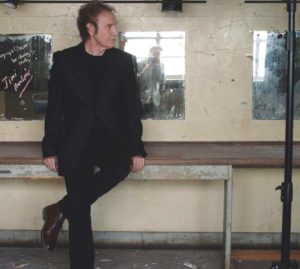Wenn ich mich am Ende eines Jahres nach meinen Lieblingsplatten frage, wird es für mich immer sehr schwierig, die wirklich besten und für mich bedeutendsten Schallplatten herauszusuchen. 1967 stellte ich meine erste Hitparade für mich zusammen. Auch das war damals schon nicht einfach, obwohl ich wöchentlich mit dem neben mir sitzenden Schulkameraden Hitlisten ausgetauscht habe, und somit einen guten Überblick hatte.
Damals waren die Top 5 des Jahres:
1. The Flower Pot Man: „Lets go to San Francisco“
2. Jimi Hendrix: „Hey Joe“
3. The Four Tops: „Bernadette“
4. The Turtles: „Happy Together“
5. The Kinks: „Susannah`s Still Alive“
Nun, dachte ich, vielleicht wird es einfacher, wenn ich einmal eine Halbjahresbilanz ziehe würde. Leider nicht, auch jetzt fiel die Auswahl schwer. Gerne hätte ich etwa Chantal Acad & Bill Frisell mit der Platte Live at Middelheim aufgenommen, aber welche Platte dafür entfernen? Und dann kommt auch noch am 29.6.18 von John Coltrane Both Directions At Once – The Lost Album heraus. Bisher wurde nur ein Titel dieser bisher vollkommen unbekannten Platte veröffentlicht und der hatte es schon in sich (siehe Süddeutsche Zeitung vom 16. Juni). Hilde Marie Holsen mit Lazuli ist natürlich die Überraschung überhaupt, ich schrieb darüber im Plattenschrank 164. Das Duo Gazzana war schon einmal in einer Jahres-Top-Twenty vertreten, auch die neue CD fasziniert, besonders natürlich Messiaen mit Thème et Variations. Eine letzte Bemerkung: Die Plätze 11 bis 20 sind in etwa gleichwertig, hier gibt es keine Rangordnung mehr. Nun also die Top Twenty des ersten Halbjahres 2018:
01. Brian Eno: Music for Installations
02. Hilde Marie Holsen: Lazuli
03. Jakob Bro: Returnings
04. Duo Gazzana: Ravel, Franck, Ligeti, Messiaen
05. Steve Tibbetts: The Life Of
06. Nils Frahm: All Melody
07. The National Jazz Trio Of Scotland: Standards Vol.4
08. Andy Sheppard Quartet: Romaria
09. Father John Misty: God´s Favorite Customer
10. Ray Davis Our Country: Americana Act 2
11. Marisa Anderson: Cloud Corner
12. Kristjan Randalu: Absence
13. Kit Downes: Obsidian
14. Ketil Björnstad & Anneli Drecker: A Suite Of Poems
15. Norma Winstone Trio: Descansado
16. Shinya Fukumori Trio: For 2 Akis
17. Sly and Robbie with Nils Petter Molvaer: Nordub
18. Venetian Snares & Daniel Lanois: Venetian Snares X Daniel Lanois
19. Frode Haltli: Avant Folk
20. Bobo Stenson Trio: Contra La Indecisión





